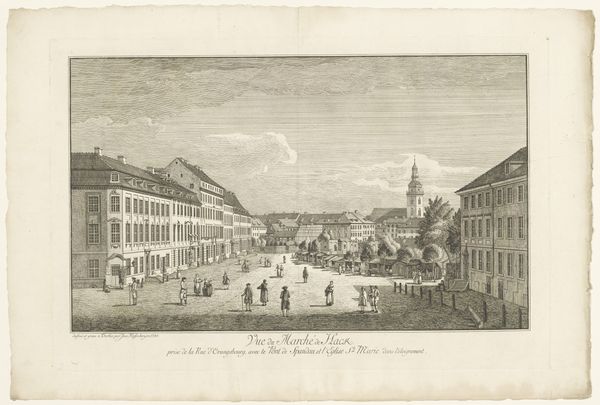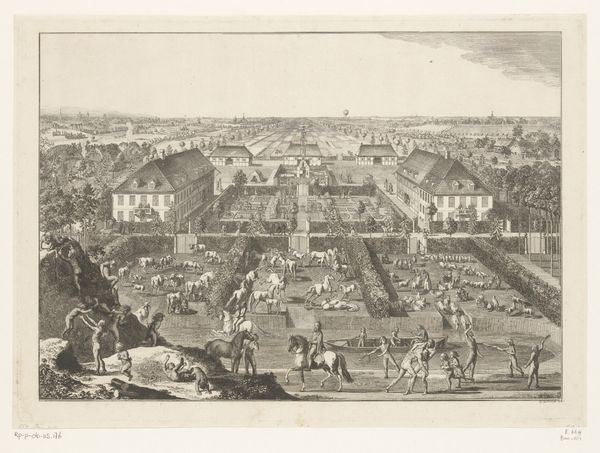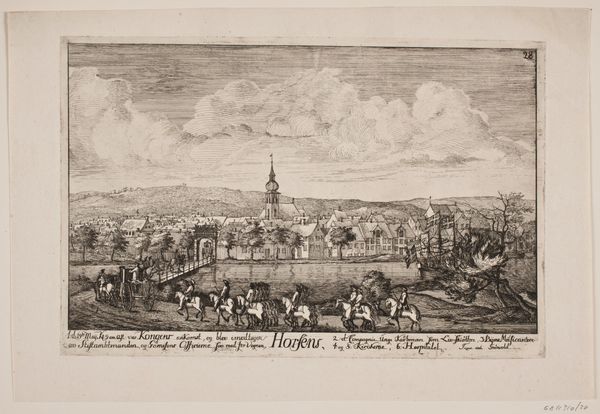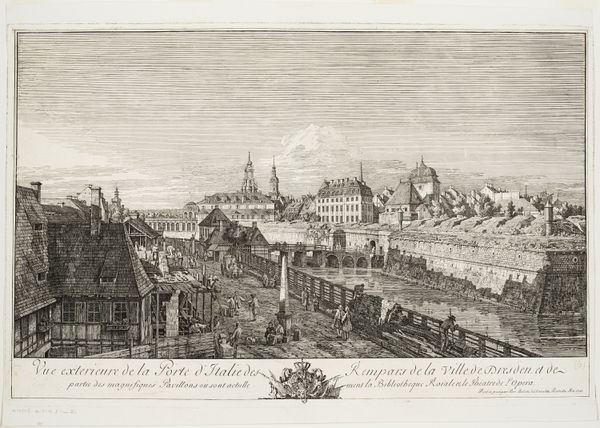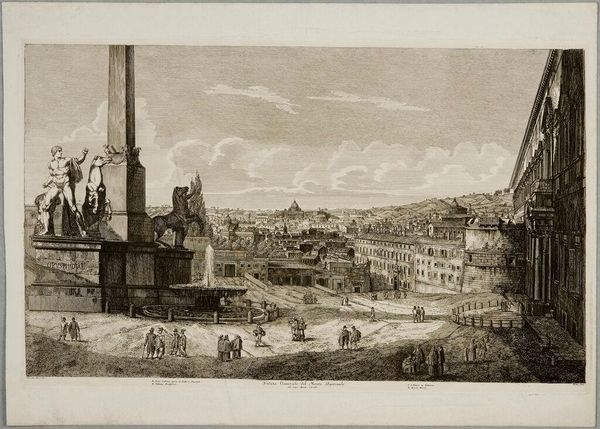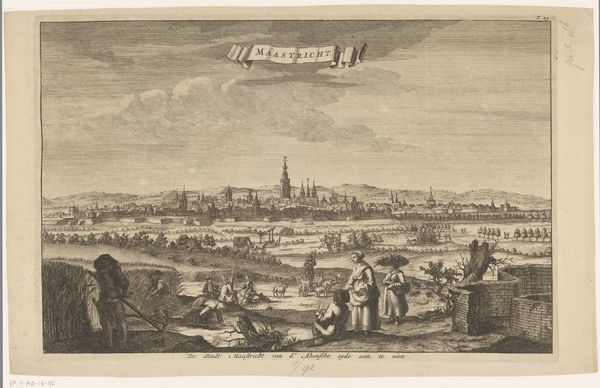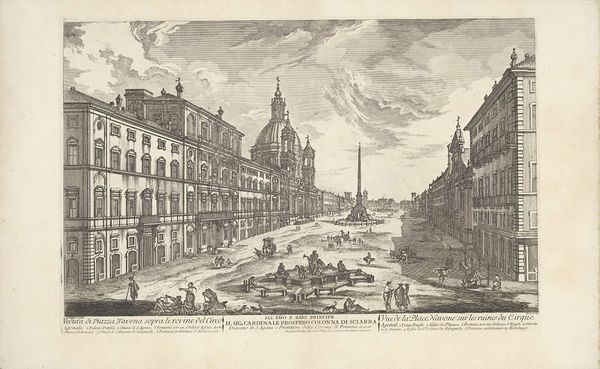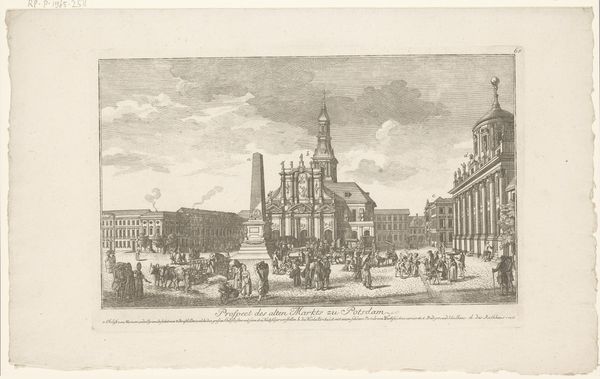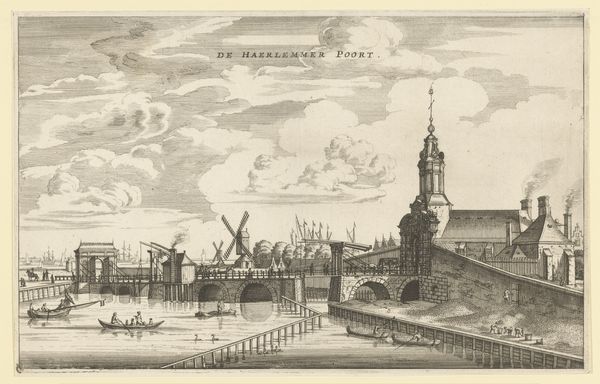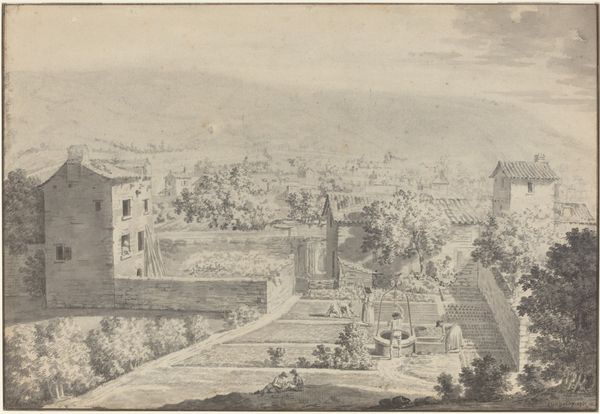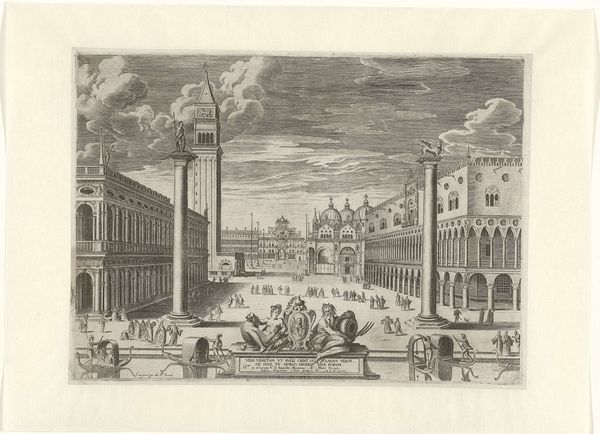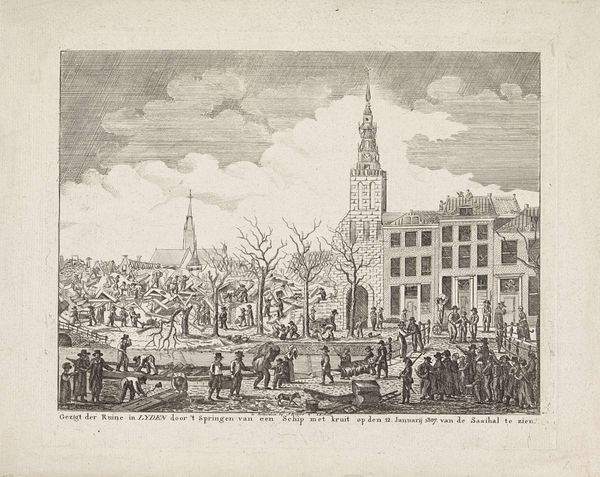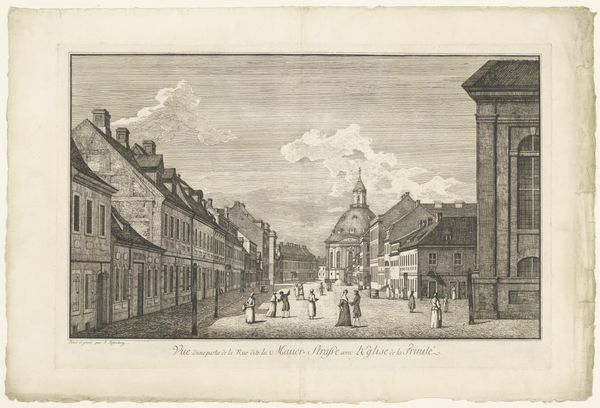
View of the Quirinal Hill in Rome with the fountain of the horse tamers at left 1822
0:00
0:00
drawing, print, etching
#
drawing
#
neoclacissism
# print
#
etching
#
human-figures
#
landscape
#
horse
#
cityscape
#
history-painting
Dimensions: Sheet: 19 1/2 x 29 7/16 in. (49.6 x 74.7 cm) Plate: 17 1/4 x 27 13/16 in. (43.8 x 70.6 cm)
Copyright: Public Domain
Curator: Luigi Rossini’s etching, "View of the Quirinal Hill in Rome with the fountain of the horse tamers at left," completed in 1822, presents a fascinating cityscape steeped in the aesthetics of Neoclassicism. Editor: The overwhelming thing for me is the intense activity implied by the use of line; every inch of this print seethes with a feeling of movement despite being ostensibly a study of inert urban architecture. Curator: Indeed, Rossini masterfully uses etching to create depth, leading the eye across the Quirinal Hill, offering not only a topographic rendering, but embedding within the lines the story of civic power, a classical obsession renewed in the 19th century. Look at the horse tamers; wild spirit harnessed. Editor: I’m struck by how that narrative you identify, the taming, the holding back, seems relevant also to the way this image was produced. The very medium – etching – dictates control; acid biting into a metal plate to create the image seems so deliberate. The density of the line suggests intense labour, both artistically and perhaps even historically. Curator: Absolutely. The Neoclassical style embraced these sorts of symbolic compositions, allusions that would have resonated deeply with viewers familiar with the visual rhetoric of power and social order. And it speaks to human capacity, even dominance. Editor: And to Rome’s reinvention of itself as a focal point for empires? All empires are built, quite literally, and this perspective makes you think of the manual process: the quarrying, the transport of materials to then facilitate Rome’s grandiloquence. Rossini, through the sharp contrast of black lines, has captured labour so efficiently; the consumption of these things becomes explicit in his intense medium. Curator: Precisely, we see not just a landscape but a stage upon which ideals are performed and power displayed through carefully chosen and carefully positioned emblems. Editor: So, Rossini's lines expose not only the forms of Rome, but how much humans can manipulate the city through a dedication to manufacture. I am interested to consider this interplay of the material city, represented via very hands-on processes. Curator: And the dreams the city inspires! What a fascinating dance between symbol and substance he has captured.
Comments
No comments
Be the first to comment and join the conversation on the ultimate creative platform.
